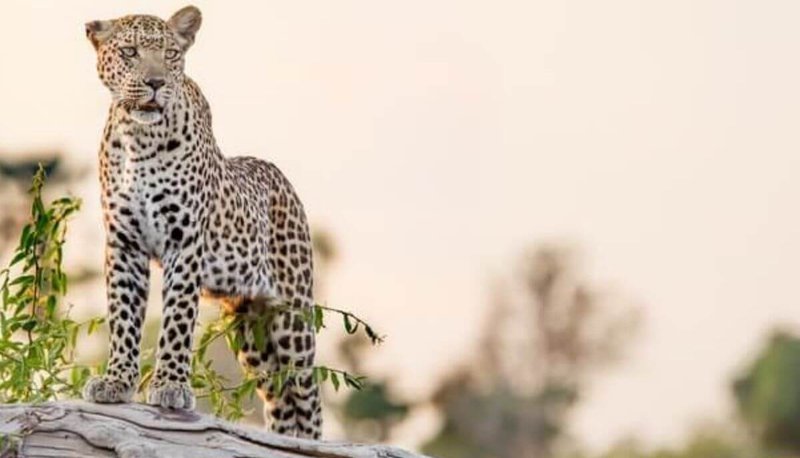
Imagine sharing a neighborhood with a big cat—one that could easily take you down if it felt threatened or hungry. That’s the reality in some parts of the world where leopards roam. Let’s dive into the factors that can influence their behavior toward humans and understand the risks associated with these incredible cats.
Understanding Leopard Behavior
Leopards are adaptable predators, known for their incredible hunting skills. They’re solitary animals, which means they usually prefer being alone rather than in packs like lions. This independence can make them appear aloof, but it also means they are highly territorial. When it comes to their territory, leopards are aggressive and may see humans as intruders.
Leopard hunting techniques further explain their behavior. They are stealthy hunters, often stalking their prey before making a quick, calculated attack. This instinct to hunt can sometimes lead to clashes with humans, especially in areas where their natural prey is scarce. If a leopard feels pressured or hungry, it might mistake a human for easy prey.
In essence, leopards are driven by instinct—protecting their territory and hunting for food. Understanding this can help us respect their space and minimize encounters.
Historical Context of Human-Leopard Conflicts
Conflicts between humans and leopards aren’t a new phenomenon. In many parts of Africa and Asia, there have been records of leopard attacks on livestock and, in rare cases, humans. Historical reports show that these big cats have occasionally preyed on people, particularly in rural areas where their natural habitat overlaps with human settlements.
The relationship has transformed over time. Historically, when leopards faced habitat loss due to human expansion, they adapted by venturing closer to urban areas in search of food. This often results in humans and leopards crossing paths more frequently, increasing the potential for dangerous encounters.
In communities where leopards live close to humans, it’s vital to understand that while these interactions can be scary, they often stem from the cats seeking food or defending their territory. Awareness of this can help communities create strategies to coexist peacefully with these magnificent animals.
Risk Factors for Leopard Attacks
You might be curious about the actual risk of being attacked by a leopard. While attacks are relatively rare, certain factors can increase the likelihood. Here are a few key elements that play a vital role:
- Habitat Encroachment: As humans expand into leopard territories, the chances of encounters rise. Urbanization and agriculture can drive leopards into smaller, isolated areas.
- Lack of Natural Prey: If leopards can’t find enough natural prey like antelope or deer, they may venture into agricultural lands or villages looking for food.
- Human Behavior: Approaching or provoking a leopard can trigger an aggressive response. Most attacks occur when a person inadvertently surprises or threatens a leopard.
These risk factors highlight the importance of understanding leopards’ needs and behaviors. By respecting their territory and taking precautions, we can significantly reduce the risks of conflict.
Leopard Attacks: Real-Life Incidents
Let’s look at some real-life incidents that help paint a clearer picture of the dangers leopards pose to humans. There have been documented cases of leopards attacking livestock and sometimes even humans, particularly in areas like rural India and Africa.
For instance, in 2019, a leopard was reported to have attacked several livestock in a village in India, causing panic among residents. In rare cases, leopards have even attacked people, usually when they feel cornered or threatened. These instances often make headlines, raising awareness about the potential dangers.
While these attacks are not the norm, they serve as a reminder that leopards are wild animals with instincts driven by survival. Understanding these incidents can help communities develop strategies to avoid encounters and protect both people and leopards.
How to Coexist with Leopards
So, what can we do to coexist peacefully with leopards? There are several strategies that communities in leopard habitats can implement to reduce the risk of encounters:
- Livestock Protection: Using secure enclosures for livestock can deter leopards from seeking an easy meal. Simple measures like fencing can go a long way.
- Education and Awareness: Teaching communities about leopard behavior can empower people to recognize the signs of a nearby leopard and avoid provoking them.
- Conservation Efforts: Supporting conservation programs can help protect leopard habitats, ensuring these beautiful cats have ample space and prey without venturing too close to human settlements.
By taking these proactive measures, communities can help reduce the chances of leopard encounters and create a safer environment for both humans and wildlife.
Can leopards be dangerous to humans? Absolutely—but it’s essential to understand the context. These creatures are not inherently aggressive but will defend their territory and seek food when necessary. By respecting their habitats and making efforts to coexist peacefully, we can appreciate the beauty of leopards while minimizing risks.
Ultimately, fostering a respectful relationship with wildlife like leopards enriches both human lives and the natural world. With awareness and action, we can help ensure that these magnificent big cats continue to thrive, safe from threats—like habitat loss—and that humans remain safe too.

